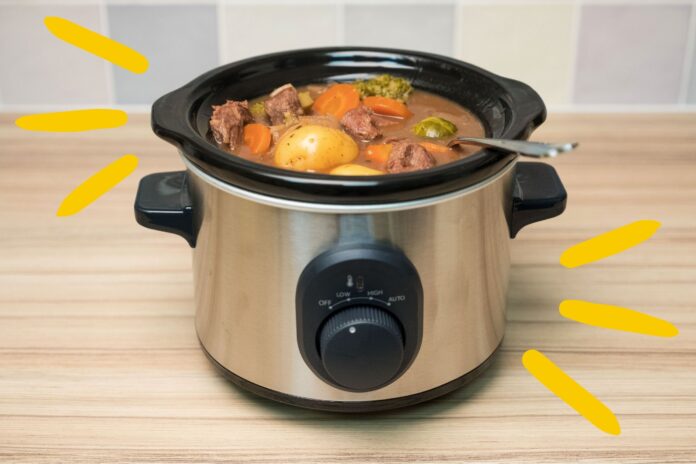It’s the time of year when conversation turns to gardening and growing vegetables. However, one in eight British households has no garden. That’s approximately 3.3 million garden-less homes. Moreover, while the average waiting list for an allotment is three years, residents in some parts of London face a 15-year wait. Kids, there’ll be no fresh food for us this spring…
…If you’re one of those three or so million who don’t have access to a garden or allotment and if the constant chitter chatter of keen gardeners makes you pensive as you look out of your flat window, then worry not. Fortunately, there are plenty of plants well-suited to indoor cultivation, requiring only your care, attention, and a few basic guidelines.
Yep, with a little ingenuity, a sunny sill and this article, you can have your own indoor edible garden in no time. Here’s are some fruit and vegetables that you can grow inside.
Tomatoes: An Indoor Favourite
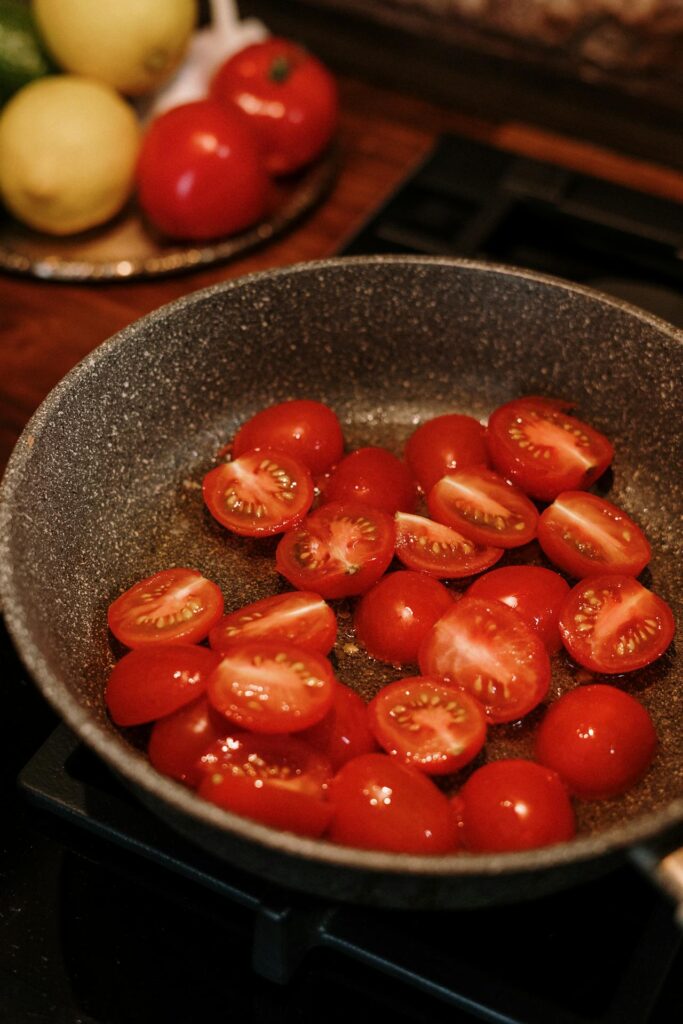
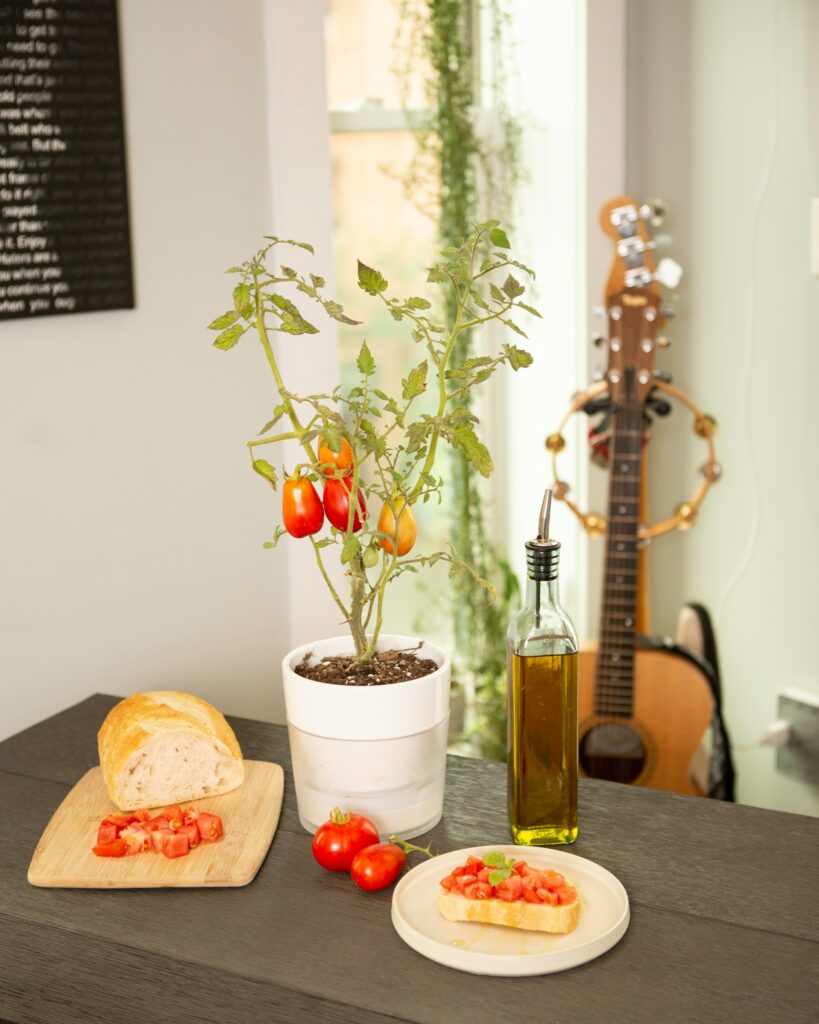
Yes, you can enjoy fresh, homegrown tomatoes when you don’t have any outdoor space, as vining plants (“indeterminates”) like tomatoes are ideal for the indoors.
That said, not all tomatoes grow well inside. According to the Guardian, the best variety to grow indoors is the Russian House Tomato. This is a dwarf plant that is a prolific producer of tiny, tasty cherry tomatoes and one that fares better in pots than in the ground.
While the Russian House Tomato can tolerate more shade than other varieties of tomatoes, they do need some sun – so sit them next to a sunny window and a good light source in the colder months. Of course, you shouldn’t expect a big harvest, but the pleasure of eating these sun-warmed beauties, fresh off the vine is undeniable.
It’s a good idea to grow basil plants in the same space as your tomatoes as they keep pests and disease at bay, and of course, taste bloody marvellous as a duo. Speaking of herbs…
Herbs: Aromatic Essentials


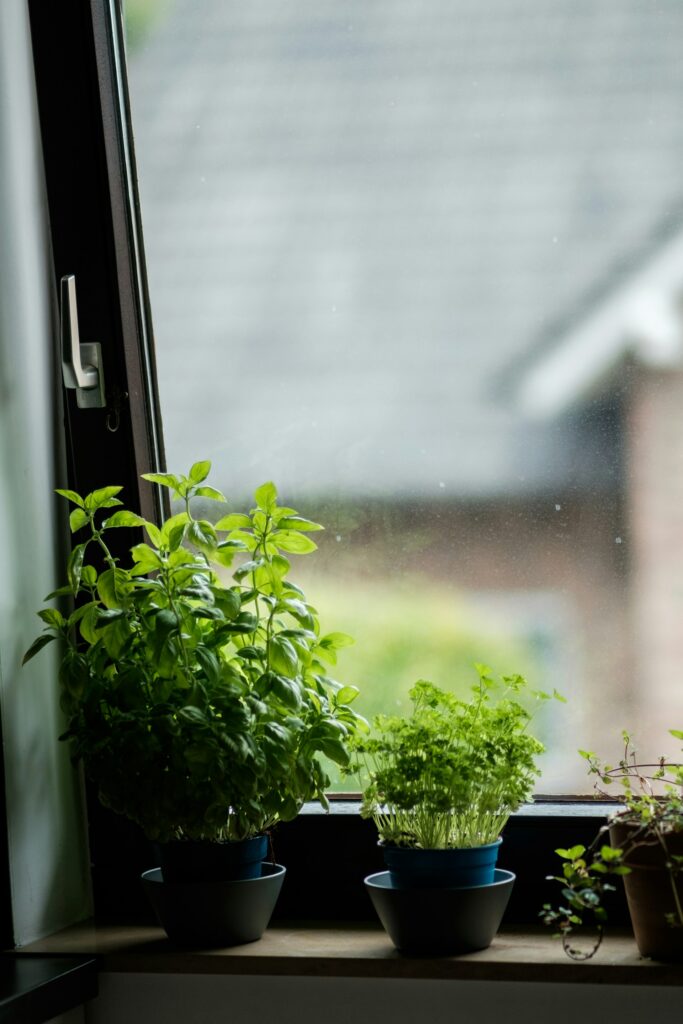
Herbs are an easy and useful thing to have on hand when cooking up a storm at home. Keeping a few pots of them on your kitchen windowsill provides you with easy, convenient ways to add flavour to food and offers great value, plus they look and smell great.
The key benefit of cooking with fresh herbs is their amazing ability to enhance dishes. They can transform a cheap cut of meat, stretch a sauce for pasta and add a new dimension to anything from vegetables to eggs. Herbs add aroma, texture and colour to cooking and they offer a healthy way to season food.
There are a host of herbs to choose from, each with its own flavour, aroma and appearance. Varieties such as basil, chives, parsley, and coriander thrive especially well on a sunny windowsill. Jekka McVicar, who is widely recognised as one of the country’s foremost experts on herbs and is the creator of Jamie Oliver’s herb garden, shares her top tips on how to look after your pots of fresh herbs once you get them home:
- Let there be light: Fresh living herbs thrive in bright, draught free places. A kitchen windowsill is ideal.
- Water: Water little and often. Water when the soil is dry to touch, a teaspoon is usually enough! Most people make the mistake of overwatering their herbs.
- Drainage: Don’t let them stand in water too long. Ensure the pot holder for your living herb has drainage holes in the base, or simply keep on a saucer.
- Don’t put it in the fridge: Keep out of the fridge, as cold temperatures damage fresh living herbs.
- Snip: Snip or pick from the top to allow light to get to lower leaves.
If you’ve had a go at growing herbs indoors before, but they constantly die, consider an indoor gardening system like Herbstation.
Read: Growing your own fruit and vegetables, a few pointers on getting started
Leafy Greens: A Touch Of Verdure

Yep, lettuce can be grown indoors or on a windowsill all year round. With minimal space and effort, you can have a continuous crop of fresh, tender lettuce leaves to elevate your meals.
It’s one of the most rewarding greens to grow indoors. Just like growing herbs indoors, all (within reason) you need to do is provide the right indoor growing conditions.
Lettuce is a cool-season crop that adapts well to indoor conditions and can be harvested multiple times. Varieties such as Tom Thumb and Salad Bowl are ideal for indoor cultivation due to their compact size and quick growth. Here are our top tips for growing lettuce indoors:
Soil: Use a high-quality potting mix and shallow containers that allow for easy harvesting.
Sunlight: Ensure your lettuce gets at least 4 hours of sunlight a day, and consider using a grow light if your space isn’t well-lit. The experts at Gardener’s Yard suggest using an indoor hydroponic gardening system like AeroGarden Harvest Elite Platinum, which see integrated grow lights provide full spectrum LED lighting optimised for indoor growth. You can click here to find more of their useful guides on growing vegetables indoors.
Moisture: Keep the soil consistently moist but not waterlogged, and you’ll enjoy a steady supply of fresh lettuce right from your windowsill.
Rotate: Rotate your pots if the light source is coming from one direction to ensure even growth and leaf development.
Read: 10 IDEAL grow-your-own herbs and vegetables
Chillies: A Spicy Home Addition
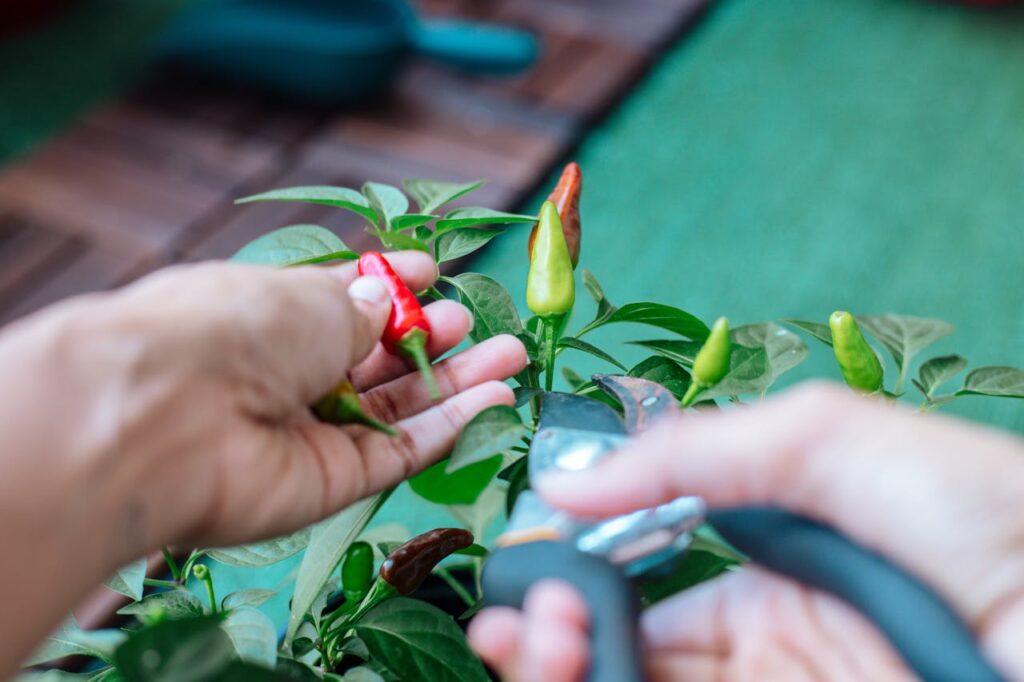
For those who favour a bit of spice, chillies are an excellent choice for your indoor garden. They can be grown in pots and require similar conditions to tomatoes. Like tomatoes, chillies require a lot of sunlight, at least 6 to 8 hours of direct sunlight per day so south-facing windows are best for these plants.
There are approximately 4000 different varieties of chillies in the world and some of these plants can grow quite large, which means that many aren’t suitable for a windowsill. Look for dwarf or compact varieties that are known to do well in containers. According to Saga magazine, chillies that do well indoors include:
Numex Twilight: Numex Twilight is an outstandingly beautiful plant that puts on a spectacular show of colours. Indeed, it’s known for its fruit that change from purple to yellow to orange and finally red as they mature.
Summer Heat F1: Summer Heat F1 is an early ripening Jalapeno pepper. This hybrid chilli has a pungent hot flavour. It’s compact and ideal for windowsills.
Demon Red: Demon Red is a small, very hot chili pepper that is often used for Thai dishes and one of our personal favourites.
Inferno: This one is a prolific producer. It produces medium-sized, spicy peppers that are typically yellow and mature to red. However, it’s not as fiery as the name suggests.
Strawberries: Sweet Berries On Your Sill
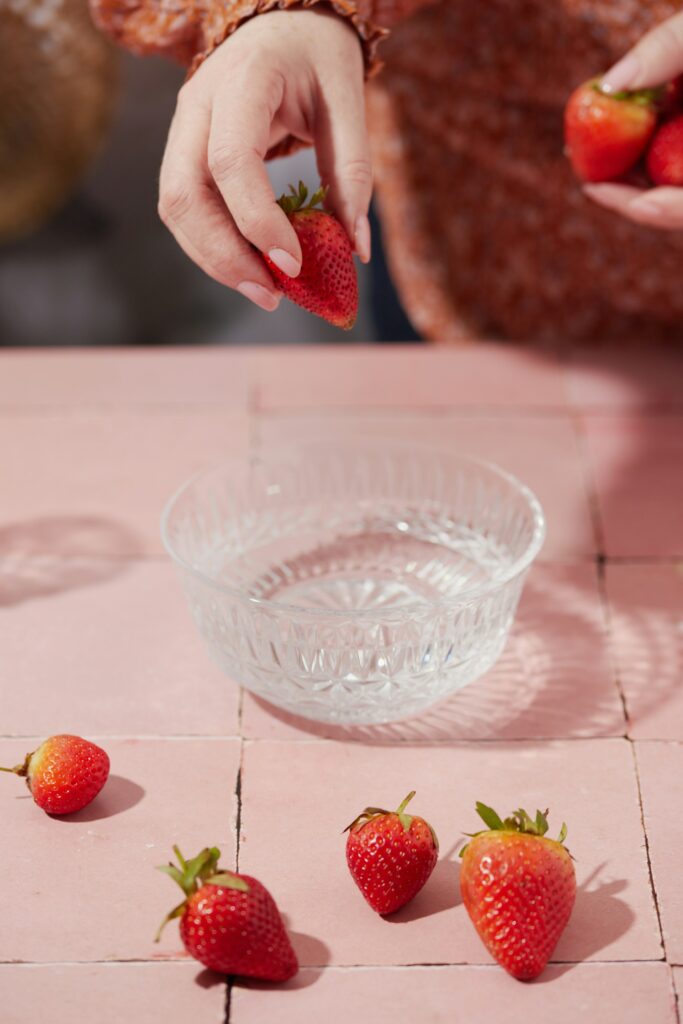
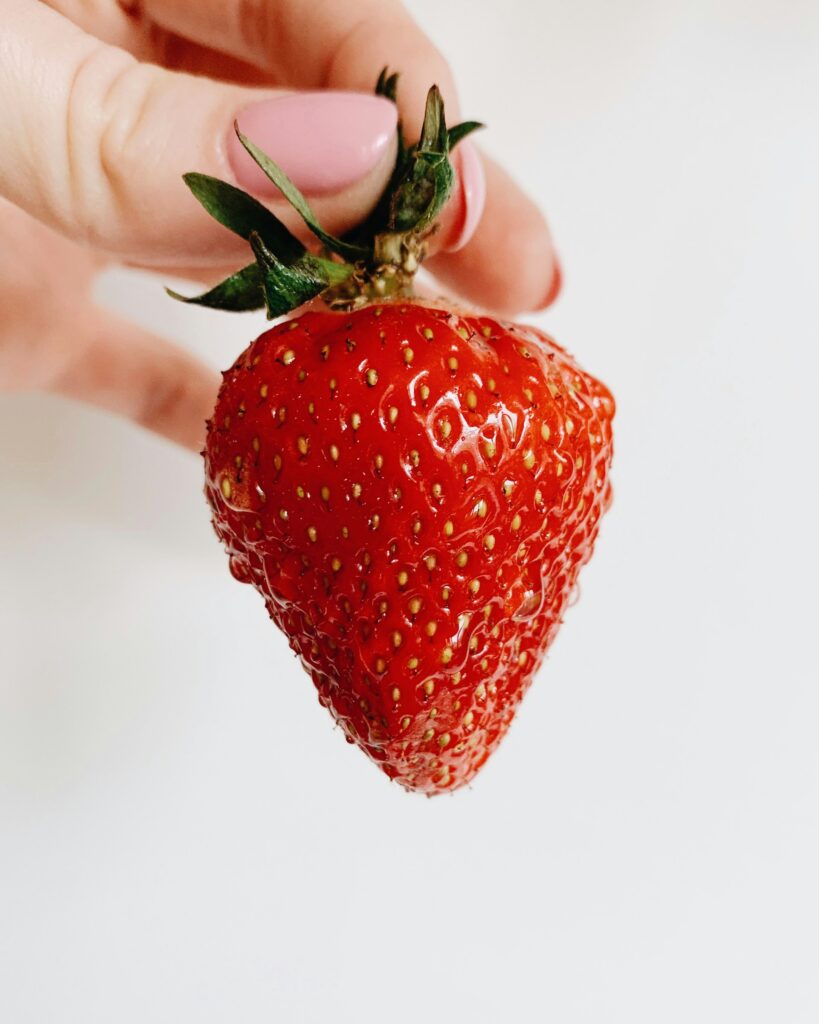
Even if you have limited space, it’s possible to grow sweet berries on your sill (sounds like a line from a Harry Styles song, right?). A huge advantage of growing strawberries indoors is that the fruit is protected from birds and insects that love to eat the ripe berries – which means more for you!
Choose a variety like ‘Albion’ or ‘Seascape’, which are day-neutral and known for their ability to produce fruit throughout the year. When growing strawberries indoors, select a deep pot with good drainage to accommodate their root system and use a soil mix that’s rich in organic matter.
Position your strawberry plants in a spot that receives ample sunlight—at least 6 hours of direct light daily is ideal. If natural light is limited, especially during the winter months, consider supplementing with grow lights to ensure your plants receive the energy they need to fruit.
Regular watering is crucial, but be careful not to overwater as strawberries are susceptible to root rot. Allow the soil to dry slightly between waterings, and ensure that any excess water can drain away easily.
Now, perfect for the glut you’re due to receive later in the year, here’s one of our favourite recipes for strawberry and cream doughnuts.




